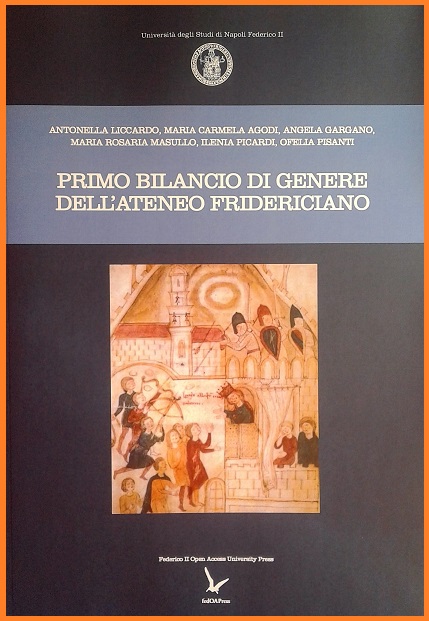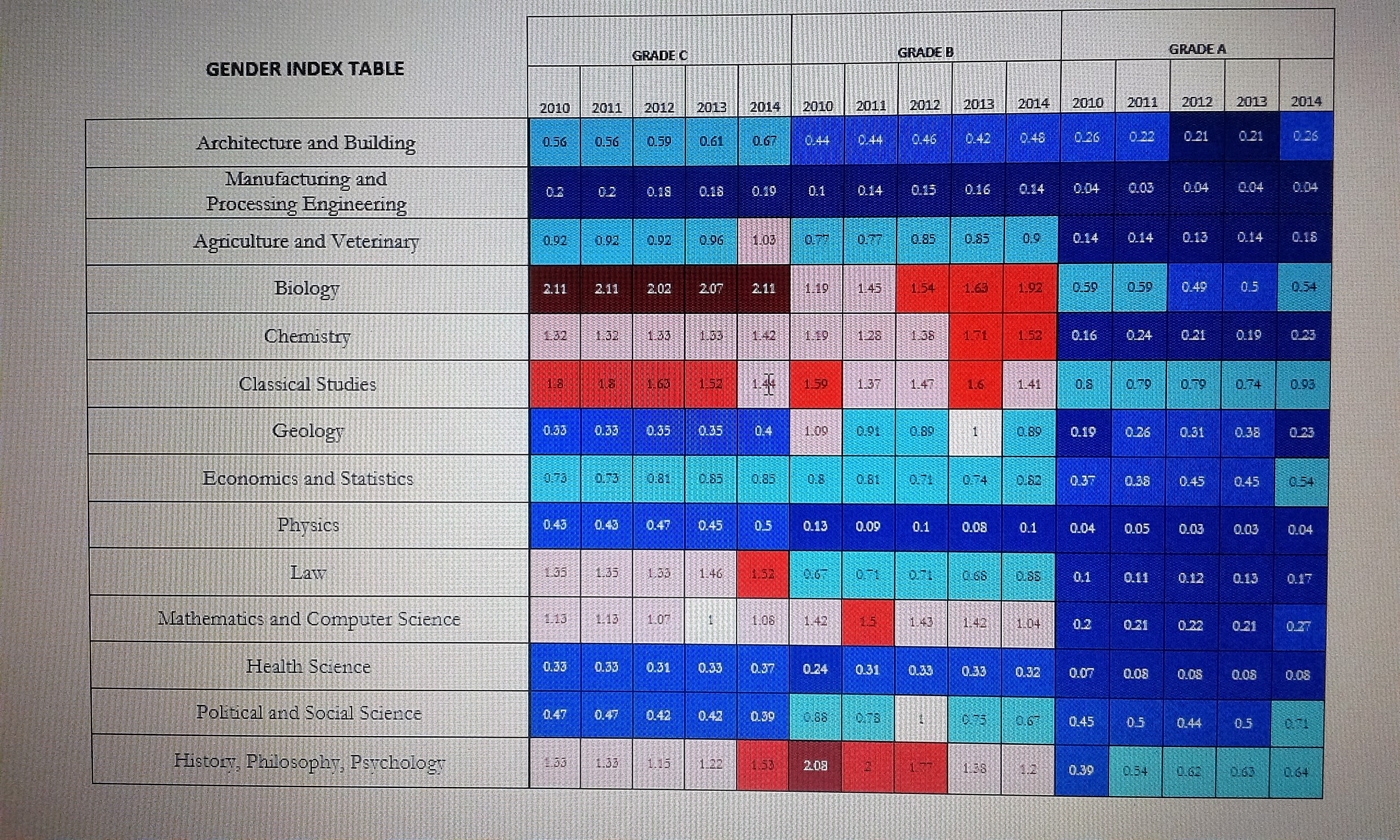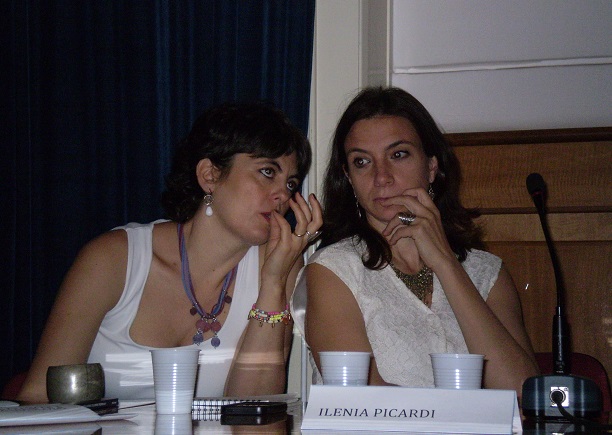 The GENOVATE Community is a platform which enables GENOVATE partners to share institutional information and case studies, and facilitates the coordination of a buddy system for bench learning.
The GENOVATE Community is a platform which enables GENOVATE partners to share institutional information and case studies, and facilitates the coordination of a buddy system for bench learning.
The GENOVATE Community consist of seven GENOVATE partner institutions; the GENOVATE International Advisory Board; key strategic collaborators and stakeholders and the general public. It is a mechanism designed to facilitate meaningful knowledge exchange across the community at local, national and international levels within each of the partner institutions’ countries, across Europe and globally.


The First Gender Budget of the Ateneo Fridericiano (FedOAPress, 2016) is a strategic tool that provides an assessment of the political-economic and financial decisions of the Università degli Studi di Napoli Federico II (UNINA) administration from a gender-sensitive perspective. Its main goal is to support a more efficient, transparent, and equitable, management of resources.
The front cover image of the First Gender Budget of the Ateneo Fridericiano is a detail of a miniature illustration retrieved from Pietro da Eboli’s poem Liber ad honorem Augusti (written circa 1194-1197), portraying Costanza D’Altavilla (1154-1198), queen of the Kingdom of Sicily, and mother of Federico II (1194-1250), who will become Holy Roman emperor and will found the very first State-funded university (Università degli Studi di Napoli “Federico II”) in Europe.

Dante Alighieri speaks highly of queen Costanza D'Altavilla in Paradiso, Canto III, vv.118-120:
"Quest’è la luce de la gran Costanza
che del secondo vento di Soave
generò ‘l terzo e l’ultima possanza."

______________________________________________________________________________________________________

Light blue indicates men; red indicates women in all figures of this document. ISCED classification is used to indicate the different education levels alongside the Italian classification in the majority of figures below.[2] She Figures classification is used to indicate academic positions.[3]
Women students often graduate with higher grades than their male counterparts, as shown in the graphs of average grades for women and men at the ISCED 5 level in the different types of degrees (Ordinary Bachelor degree (L); Honours Bachelor degree (LM); Master’s degree (LMU). Furthermore, the number of women enrolled in graduate school (ISCED 6) is also higher than the number of men.

Even though women are now slightly more than half of all ISCED 5 graduated students (58%), and of students at the ISCED 6 level (56%), theirpresence in academia is still relatively marginal. In fact, women are underrepresented at the top-level positions – representing only 20% of all Full Professors (corresponding to Grade A according to the classification system used by She Figures). The UNINA career path diagram shows a sharp divide between women and men, and represents clear evidence of the so-called ‘leaky pipeline effect’, i.e. the loss of highly qualified women at top level positions.

The challenges faced by women in career progression can be measured by the ‘glass ceiling index’, defined as the ratio between the number of women at a certain career stage and the number of women at the subsequent career stage (Grade C/Grade B; Grade B/Grade A). Whereas men’s glass ceiling index remains around 1 at all career stages and reveals an equal number of men in the different stages, women’s glass ceiling index is as higher as the position in the academic ladder. In particular, women’s glass ceiling index in the promotion stage from Grade B to Grade A is 2.5, indicating that the number of women reaching Grade A is less than half the number of women at Grade B (40%).

The Gender Index tables indicate the ratio between the number of women and the number of men in a specific field and academic position in a given year. Data relative to Faculty staff (professors and researchers alike) at UNINA illustrate how some academic fields remain male dominated (i.e. Engineering, Physics, Health Science). In order to better appreciate the differences between women and men, data in the Gender Index tables are differentiated by colour: the darker the blue, the worse the Gender Index for women (R<1); the darker the red, the better the Gender Index for women (R>1); white indicates numerical parity of women and men (R=1). It is noticeable the gender distribution of the Grade C and Grade B positions (with pink-red and light/dark-blue areas for women and men respectively) in some disciplines, and the absence of white, pink and red areas at the top-level positions in all disciplines.
These data confirm the presence of both structural and cultural barriers that, on the one hand, show that women drop out of scientific careers; on the other hand, these data confirm the persistence of horizontal and vertical segregation trends, with some areas and positions remaining dominated by one gender.
The presence of a solid glass ceiling becomes evident by analyzing institutional and governance appointments of Faculty: only 15% of institutional appointments are assigned to women. Particularly noticeable are the data relative to coordinators of Graduate Schools: out of 67 coordinators, only 8 are women. Besides, the distribution of institutional appointments among Faculty shows how only 21% of these appointments is assigned to Grade B, while the remaining 79% is assigned to Grade A Faculty members.

In the case of Administrative and Technical staff the gap between scientific-technical and administrative management roles filled by men and women respectively can be observed.

Data analysis of absence leaves, part-time requests and perquisites illustrate how time management is different for women and men, due to issues relative to work/life balance and to care work responsibilities. For instance, the analysis of part-time staff shows how men tend to privilege vertical part time (full time work concentrated on certain days) more frequently, and how women tend to privilege horizontal (reduced hours distributed throughout the week) or mixed part time (a combination of both vertical and horizontal arrangements) instead.

Similarly, it can be observed that in some cases compensation for night shifts and holidays and overtime work is received by men, while about 60% of Temporary Responsibility Allowances are received by women. From a gender perspective, these data illustrate a very important difference: men can supply the ‘time’ resource when needed, while women are more inclined to take on roles such as head officer and the like.

****************************************
The official presentation of the First Gender Budget of the Ateneo Fridericiano was held on 7 June 2016 in the Aula Pessina of the Università degli Studi di Napoli "Federico II". Prof. Gaetano Manfredi, UNINA Rector, also participated in the panel.

The Gender Budget working group: Antonella Liccardo, Maria Carmela Agodi, Angela Gargano, Maria Rosaria Masullo, Ilenia Picardi, Ofelia Pisanti.
It is the authors’ hope that Gender Budgeting may become a well-established institutional practice at UNINA, and may support and monitor gender-equality transformative actions.
The First Gender Budget of the Ateneo Fridericiano is available at: http://www.fedoabooks.unina.it/index.php/fedoapress/catalog/book/38
For further information please visit the website: www.genovate.unina.it
Contacts:
Antonella Liccardo, Coordinator of the Gender Budget working group of GENOVATE@UNINA: This email address is being protected from spambots. You need JavaScript enabled to view it.
Ofelia Pisanti, National Coordinator of GENOVATE@UNINA: This email address is being protected from spambots. You need JavaScript enabled to view it.
______________________________________________________________
[1] Dante Alighieri. The Divine Comedy, translated by Henry F. Cary. Vol. XX. The Harvard Classics. New York: P.F. Collier & Son, 1909–14; Bartleby.com, 2001. www.bartleby.com/20/.
[2] UNESCO Institute for Statistics. (2011). International Standard Classification of Education – ISCED 2011. Retrieved from: www.uis.unesco.org/Education/Documents/isced-2011-en.pdf
[3] European Commission. (2015). She Figures Handbook. Retrieved from: https://ec.europa.eu/research/swafs/pdf/pub_gender_equality/she_figures_2015_Handbook_final.pdf